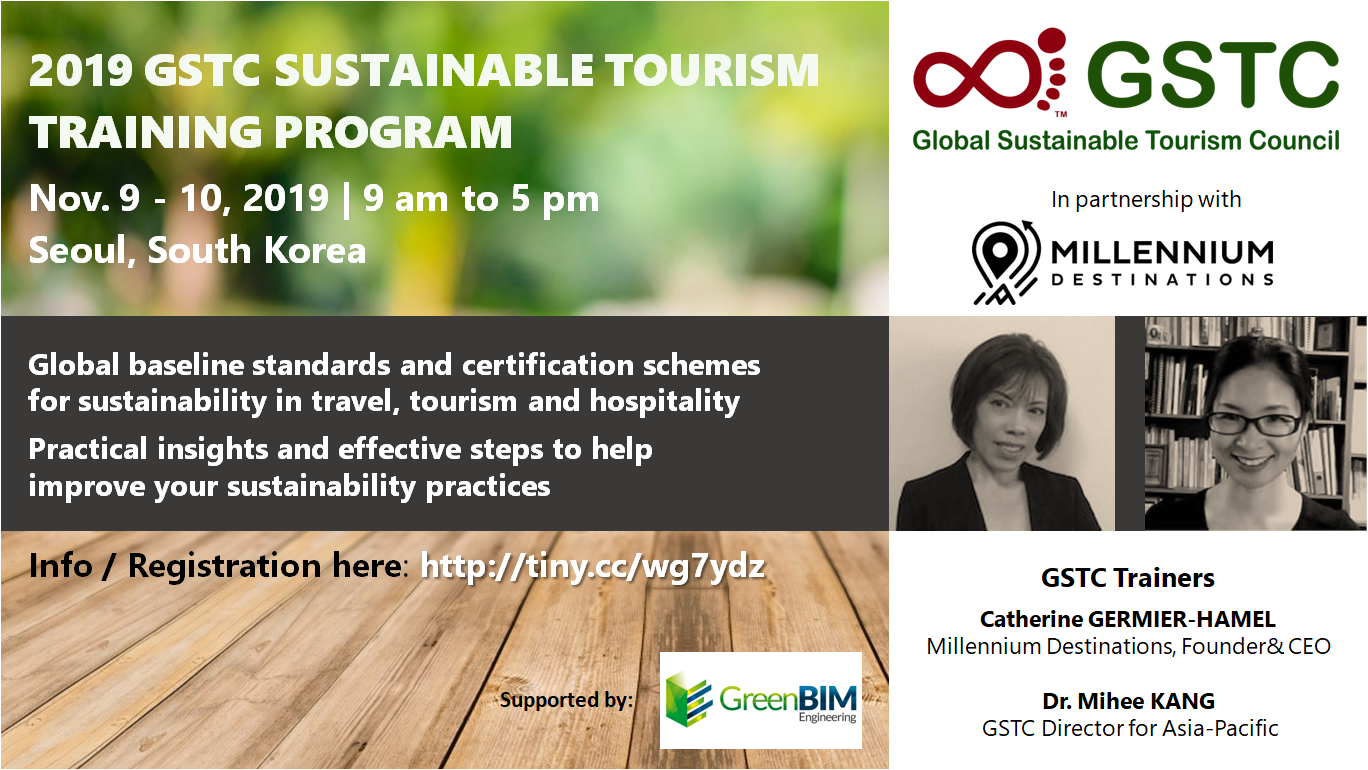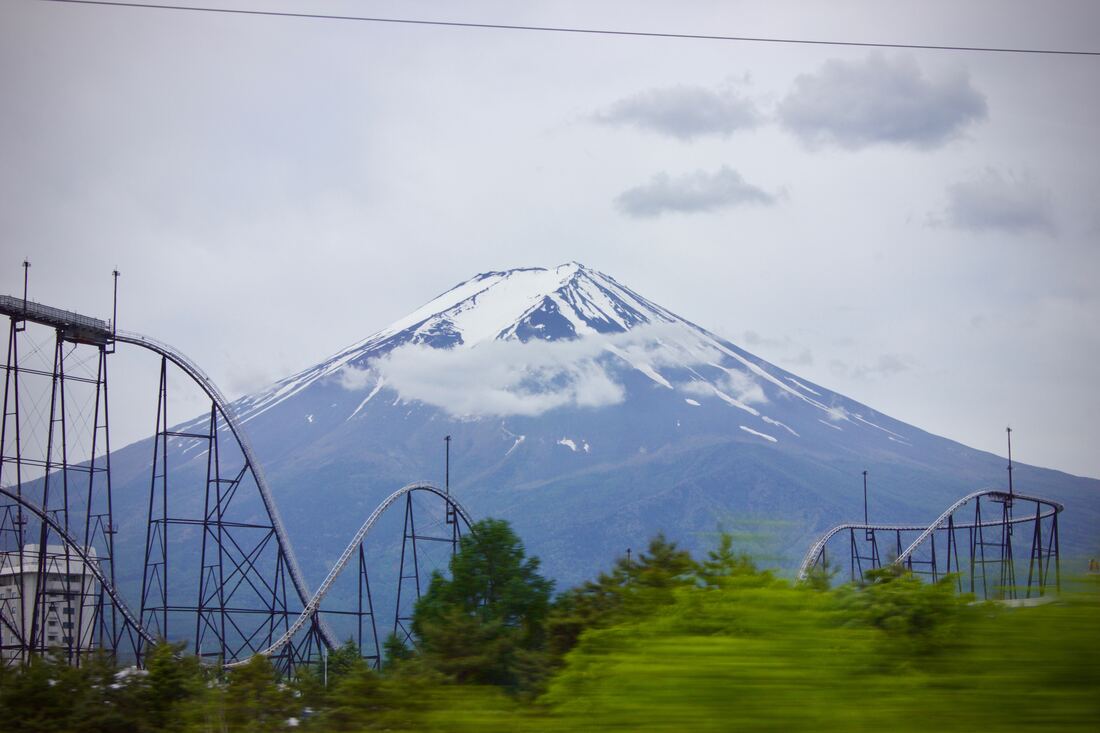|
By Catherine GERMIER-HAMEL - Siem Reap, Cambodia The first Asia Workshop of the International Network of Sustainable Tourism Inventories - INSTO took place in November in Siem Reap, Kingdom of Cambodia. The first Asia Workshop of the International Network of Sustainable Tourism Inventories - INSTO was successfully co-hosted on November 17 to 20, 2019 in Siem Reap, Cambodia, by the World Tourism Organization (UNWTO) and the Minister of Tourism of Cambodia, in collaboration with the Monitoring Centre for UNWTO Sustainable Tourism Observatories (MCSTO). I attended this highly inspiring and energizing event aimed at further advancing the dialogues among the established and potential observatories in Asia-Pacific region and strengthening knowledge about the regular monitoring of tourism at the local level, as the Founder & CEO of Millennium Destinations and delegate representing South Korea. The workshop was targeted at:
Considering the continuous growth of tourism in the Asia and the Pacific region, it seems crucial to be able to collect and monitor the necessary relevant data to make sure that tourism is planned, managed and controlled. As of today, there are 28 observatories in the world (including 9 in China), and the Kingdom of Cambodia expressed its intention to establish one Sustainable Observatory in Kompong Phluk in 2020. Japan and the Republic of Korea also expressed their interest in establishing observatories. This was welcomed by Dr. Dirk Glaesser, Director of Sustainable Development of Tourism, and by Mr. Harry Hwang, Deputy Director of Regional Department for Asia and the Pacific. The UNWTO International Network of Sustainable Tourism Observatories was created in 2004 with the main objective to support the continuous improvement of sustainability and resilience in the tourism sector through systematic, timely and regular monitoring of tourism performance and impact and to connect dedicated destinations in order to better understand destination-wide resource use and foster the responsible management of tourism. On November 20, I took a field tour to Kampong Phluk Eco-tourism Community, located in Siem Reap province close to Tonle Sap Lake. The Kampong Phluk commune has 3,707 peoples (911 families).
Kampong Phluk Eco-Tourism Community was established on April 17, 2015. It covers 12,329 hectares in 3 villages and plays an important role to attract many national and international tourists.
0 Comments
The Global Sustainable Tourism Council (GSTC) had its 2019 Sustainable Tourism Program in Seoul, South Korea on November 9 & 10, 2019 at the Seoul Global Startup Center. This session was hosted in partnership with Millennium Destinations, with Catherine GERMIER-HAMEL as Lead Trainer and GSTC Director for Asia-Pacific Mihee KANG as co-Trainer, with the exceptional participation of GSTC CEO Randy DURBAND. The training programme started with an introduction of GSTC and its four programs, as well as global trends in sustainable tourism, sustainability marketing, and sustainable tourism product development and management, followed by a detailed presentation of GSTC criteria for Industry and Destinations. It also included presentations by Luis RIESTRA, General Manager of Crescendo Hotel about Planet21 initiative of Accor group and its actions in 2019, Lin HWANG, Founder & CEO of Damogo, a Seoul-based startup specialized in food waste reduction, and Louis HAAG, Co-Founder and CEO of HEROST, developed as a digital platform for co-creating, promoting and sharing sustainable, community-based travel experiences. Through this interactive leaning journey, participants gained an in-depth understanding of the GSTC criteria as the global baseline standards for sustainability in travel and tourism, the roles of accreditation and certification in advancing the sustainability agenda in the tourism industry. The Global Sustainable Tourism Council (GSTC) manages the GSTC Criteria, the global baseline standards for sustainable travel and tourism; as well as acts as the international accreditation body for sustainable tourism certification.
On Dec. 4 to 7, 2019, the GSTC2019 Global Conference will bring together international and domestic tourism stakeholders involved in the development and promotion of sustainable tourism; including public sector, hotels, tour operators, academia, development agencies, NGOs, consultants, and more. [Collaboration post] Given its beautiful sights and rich history, Japan is an ideal place to visit for adventurous millennials. There are certain highlights that every millennial must see, and no trip would be complete without any of the places listed below. Harajuku, Tokyo Harajuku is known worldwide as the centre of Japanese youth culture and fashion, with many of its streets lined with small, independent boutiques and cafés. You'll find yourself spoilt for choice as you browse the fashion boutiques, as well as Omotesando Hills – a large shopping centre home to over 100 shops. However, what makes Tokyo so incredible when it comes to shopping is its thrift-shopping culture. Despite being the land of technology, it's a mecca for hidden vintage outlets off the beaten tracks. In Harajuku, check out Kinji Used Clothing, a warehouse filled to the brim with incredible vintage items and categorised by both style and brand. If you're looking to become more sustainable, this is a great place to start. Mount Fuji The legendary Mount Fuji is the largest volcano in Japan, standing at 12,389 ft tall. Its spectacular core has made it a prominent feature in Japanese art and literature, and there are many ways for you to experience this magnificent sight – whether from a distance, or on the Fuji Visitor Center's observation deck. Travelling to the top can be an exciting adventure, with some trips around the mountain taking as long as 12 hours. It is quite cold at the top, so remember to pack layers. Snow monkeys The snow monkey – also known as the Japanese macaque – is a species native to Japan. They are famous for their red faces and their love for bathing in the hot springs. They are also noted as being an exceptionally intelligent species, quickly learning new skills such as eating and hunting. You'll need to venture out a bit to Jigokudani Snow Monkey Park in the Nagano Prefecture to see them, but it's well worth the visit. Kyoto's temples Kyoto is home to a large collection of temples. Popular temples include Ryoan-ji, where you can sit in the zen stone garden and achieve a tranquil mindset, which is perfect for anyone who has difficulty attaining peace of mind. Kinkaku-ji – the Golden Pavilion – is one of the most scenic temples you could visit, especially if viewed from across the lake. And there's also To-ji, which is immersed in nature and full of beautiful gardens and majestic trees. Japan's 1600 temples will simply leave you spoilt for choice. Hokkaido’s flower fields Whenever millennials go anywhere, they are generally on the lookout for scenic sights to fill their Instagram pages. Some of the finest imagery can be found on the island of Hokkaido, which offers several beautiful flower fields. It's like looking out over a rainbow scattered over the land. Shibuya Crossing, Tokyo Another area that any millennial tourist should visit is the famous Shibuya crossing intersection in Tokyo. There’s so much life here, with a huge crowd of the city’s residents and visitors all milling together at once, making it a fascinating spot for photography. Japan is an incredible country, with so much to explore. These scenic locations are almost guaranteed to offer you a transcendent experience, and will leave you yearning to come back to take in even more of this divine culture. Responsible tourism
Don’t forget, though: it’s important to be a responsible tourist, and respect the locations you’re visiting – especially when they already receive huge numbers of visitors already. Part of the joy of travelling is finding hidden attractions off the beaten track (as well as the more obvious highlights like those above) so keep your eyes peeled for these hidden secrets on your travels. You never know what you might find out there. |
Archives
February 2024
|
|
France - Cambodia
|
|
Promoting Positive Places, Practices and Experiences
|
Icons by Freepik from www.flaticon.com
|







































